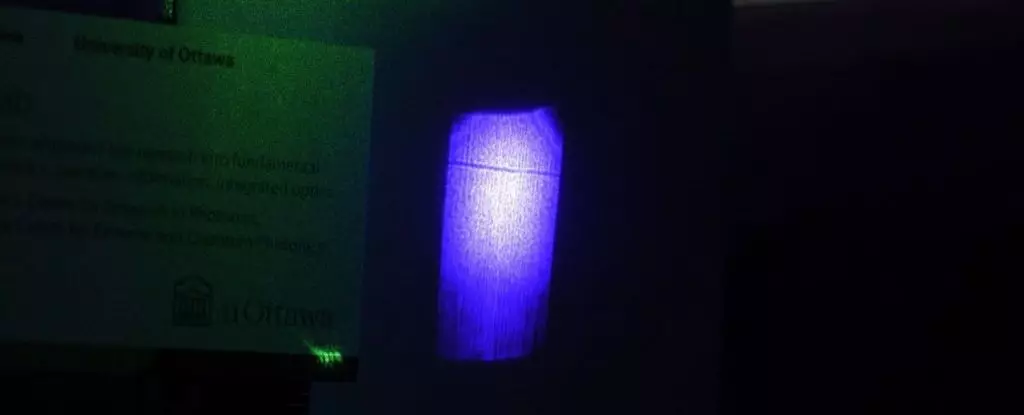Shadows are ubiquitous phenomena in our daily lives, originating whenever a light source encounters an opaque object. As light travels through space, photons engage with the materials around them, resulting in areas where light has been obstructed. The interplay of illumination and obstruction constructs simple shadows that frequently serve as reminders of our environment’s tangible boundaries. However, recent research has intrigued physicists and challenged established concepts of shadows in a fascinating way.
In a groundbreaking study, physicists have unveiled an unusual characteristic of laser light when it engages with specific transparent materials. When laser beams intersect under certain conditions, they can create a phenomenon where one beam renders portions of the other effectively opaque, thus generating a shadow-like effect, even in light. This extraordinary discovery prompts a reevaluation of the very definition of what constitutes a shadow. Raphael Abrahão, a physicist from Brookhaven National Laboratory, articulated the implications of these findings succinctly: “Our demonstration of a very counter-intuitive optical effect invites us to reconsider our notion of shadow.”
Traditionally, photons are understood to pass through each other without interacting. When beams of laser light cross paths, they typically do so without any blockage or alteration. This principle, akin to multiple flashlights illuminating a space without interference, made the idea that light could cast its own shadow seem implausible. Yet, the researchers’ exploration into this territory has uncovered a peculiar interplay of light and matter that challenges these fundamental principles.
Central to this discovery is the investigation of nonlinear materials, which behave differently than standard optical mediums due to their unique interaction properties with light. Rather than responding in a predictable manner, nonlinear materials introduce complexities such as amplification and variances in absorption that disrupt the typical linear scaling of light’s behavior. The researchers, therefore, engaged with materials like ruby, known for its unique characteristics in nonlinear optics.
Their initial foray into this peculiar intersection began informally—what started as a lighthearted discussion evolved into a serious inquiry that integrated sophisticated 3D modeling software. This innovative tool allowed the scientists to visualize their concepts and simulate scenarios where a laser beam might cast a shadow. The amusing notion quickly transitioned from mere curiosity to an experimental pursuit aimed at fulfilling an intriguing hypothesis.
In their experiment, a blue laser was projected through a ruby medium, creating an ethereal luminance on a nearby screen. The introduction of a perpendicular green laser beam marked a pivotal point in the study. As this green light interacted with the ruby’s electrons, the previously translucent ruby began to exhibit shadow-like behaviors. The blue light, unable to traverse the pathway affected by the green beam, created a tangible dark line across the illuminated area on the screen—a genuine optical shadow.
The parameters of this newly formed shadow met traditional criteria; it was not only visible but also molded itself to the contours of the screen, suggesting a dynamic interaction with its environment. Notably, this dark trace exhibited mobility, shifting in response to the movement of the green laser. This characteristic further bolstered its classification as a shadow, indicating that what was once thought to be a straightforward interaction with light could possess layers of complexity yet to be fully understood.
The implications of this discovery extend far beyond a mere reinterpretation of shadows; they pave the way for innovative applications and technologies. Understanding how light and matter interact in such unexpected ways could lead to advancements in optics and photonic technologies. Abrahão’s insights on these findings reflect a burgeoning frontier of research that could, in time, revolutionize our approach to utilizing light.
This exploration of laser behavior sheds light—not only on the intricate dynamics of physics but also on the boundless potential of scientific inquiry itself. As researchers dismantle long-held assumptions, they unearth new realms of possibility, hinting at how both light and the shadows it casts may be more interconnected than previously recognized. Thus, the nature of shadows transitions from a simple occurrence to a complex, exploratory phenomenon inviting further investigation and understanding in the fascinating world of optics.


Leave a Reply